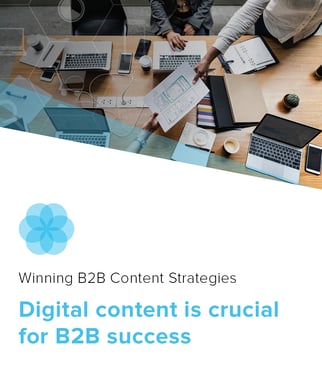With the B2B ecommerce market expected to exceed $1.2 Trillion by 2021, every aspect of the B2B supply chain is itching to get online. In order to succeed in digital commerce, manufacturers and distributors are evolving to hit customer expectations. Product information and content is a critical component manufacturers need to deliver to be able to provide the customer experience B2B buyers find informative and straight forward. But where should B2B Manufacturers start?
We recently had webinar on the topic of “How to Develop a Content Strategy for Your B2B Distributors” with our Director of Retail Alliance, Michael Hauck, and Senior Customer Champion, Jim Lesko. Check out the 30-minute webinar here, or read on to get three takeaways from the webinar that will help guide your company to digital success.
B2B Expectations are created out of B2C Experiences but have different priorities
B2B Buyers experience the ease of the digital shelf in their consumer life and they want that same convenience and ease of access to information for research and ordering when purchasing products and services at their jobs. What differs from their expectations centers around: confidence that the order is accurate, speed in the buying process (they are busy, make it easy!), and consistency in communication and service.
Distribution partners break your products into parts -- provide them with content for each type.
The value of distribution partners in the supply chain comes from selling product into smaller packages. For an example, a pallet of water bottles become cases and then sold at an individual level. Content (e.g.. product descriptions, images) for every level of your product will help your distribution partners provide the most accurate information to buyers. Imagery and product descriptions have a positive impact on the consumer digital shelf--expect it to be as important for the B2B digital buyer.
Centralizing content is the first step to growing sales online
The central tenet of the direction that B2B transactions are moving towards is having everything centralized and the ability to be agile because of that centralization. Content centralization makes it easier to establish a consistent brand presence across channels and set up new channels. Other benefits include promoting product visibility internally and helping sales representatives sell more effectively.
Written by: Caroline Egan
Caroline Egan (she/her) is a writer and former content marketing manager at Salsify, where she focused on crafting campaigns to drive brand awareness and customer engagement.
Recent Posts
How To Leverage Live Stream Shopping To Drive Real-Time Engagement and Sales
67% of Shoppers Look Past Page 1 of Ecommerce Search Results — Here’s Why
Why Shoppers Are Increasingly Turning To Product Videos — With Top Tips for Driving Sales
Subscribe to the Below the Fold Newsletter
Standing out on the digital shelf starts with access to the latest industry content. Subscribe to Below the Fold, our monthly content newsletter, and join other commerce leaders.




.svg)